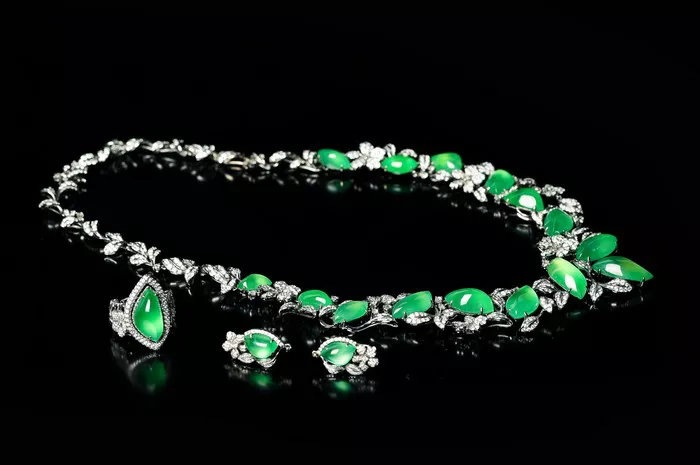Emeralds, prized for their stunning green hue and captivating beauty, have enthralled humanity for centuries. However, despite their allure, these gemstones are not without imperfections. One common issue that plagues emeralds is the presence of hairline cracks. These tiny fractures can affect the gem’s appearance and durability, posing challenges for both gemologists and jewelers alike. In this exploration, we delve into the world of emeralds, uncovering the causes of hairline cracks and the implications they hold for these precious gems.
Unveiling the Emerald
Emeralds belong to the beryl family of minerals, which also includes aquamarine and morganite. What distinguishes emeralds is their rich green color, which arises from trace amounts of chromium, vanadium, or iron within the crystal structure. This vibrant green hue has captivated civilizations throughout history, from the ancient Egyptians and Greeks to the Mughal emperors of India.
However, despite their aesthetic appeal, emeralds are inherently prone to imperfections. These flaws, known as inclusions, can manifest in various forms, ranging from mineral crystals and liquid-filled cavities to fractures and fissures. It is within this realm of imperfections that we encounter hairline cracks, a common occurrence that warrants closer examination.
The Nature of Hairline Cracks
Hairline cracks, also referred to as fractures or cleavages, are minuscule fissures that extend through the interior of an emerald. Unlike surface-reaching fractures, which are readily visible to the naked eye, hairline cracks are often only discernible under magnification. They can vary in size, ranging from microscopic to barely visible, yet their presence can significantly impact the gem’s appearance and structural integrity.
The formation of hairline cracks in emeralds can be attributed to several factors, chief among them being the geological processes that govern the formation of these gemstones. Emeralds typically crystallize in metamorphic environments, where intense heat and pressure give rise to their distinctive properties. During this formation process, fluctuations in temperature and pressure can induce stress within the crystal lattice, predisposing the gem to internal fractures.
Furthermore, emeralds often contain fluid inclusions, tiny pockets of liquid trapped within the crystal structure. As these inclusions undergo expansion and contraction due to changes in temperature or pressure, they exert stress on the surrounding material, potentially leading to the propagation of hairline cracks.
The Role of Treatment and Enhancement Techniques
In the quest to enhance the appearance of emeralds, jewelers employ various treatment techniques aimed at mitigating the visibility of inclusions and improving the gem’s clarity. One such method is the use of oils or resins to fill surface-reaching fractures, thereby reducing their visibility and enhancing the gem’s luster. However, these treatments do not address internal imperfections such as hairline cracks, which remain concealed within the gemstone.
Moreover, the treatment process itself can inadvertently exacerbate existing fractures or create new ones. The application of heat or pressure during treatment may cause internal stress within the emerald, leading to the propagation of hairline cracks or the formation of new fissures. Thus, while treatment techniques may enhance the gem’s visual appeal, they also pose inherent risks to its structural integrity.
Assessing the Impact on Durability and Wearability
Hairline cracks can compromise the durability and wearability of emeralds, rendering them more susceptible to damage and breakage. While these fractures may initially be small and inconspicuous, they can propagate over time, especially when subjected to external forces or sudden changes in temperature. As a result, emeralds with hairline cracks may be more prone to chipping, cracking, or even fracturing under normal wear conditions.
Furthermore, the presence of internal fractures can affect the gem’s stability during cutting and shaping processes. Jewelers must exercise caution when working with emeralds, as excessive pressure or improper handling can cause existing cracks to widen or propagate, resulting in irreparable damage to the gemstone.
See Also: 6 Best Substitutes for Emerald Stone
Strategies for Preservation and Care
While hairline cracks pose inherent challenges, there are measures that can be taken to minimize their impact and preserve the integrity of emeralds. Proper care and maintenance are paramount, with regular cleaning and inspection recommended to detect any signs of damage or deterioration. Avoiding exposure to harsh chemicals, ultrasonic cleaners, or sudden temperature changes can help prevent further stress on the gemstone and reduce the risk of fracture propagation.
Additionally, selecting emeralds with fewer or less prominent inclusions can mitigate the likelihood of encountering hairline cracks. Gemological laboratories provide grading reports that assess the clarity and internal characteristics of gemstones, aiding consumers in making informed purchasing decisions.
Conclusion
In conclusion, hairline cracks represent a common yet intricate phenomenon within the world of emeralds. These tiny fractures, concealed within the gem’s interior, can impact both its visual appeal and structural integrity. Understanding the factors that contribute to the formation of hairline cracks is essential for gemologists, jewelers, and consumers alike.
While treatment techniques and careful handling can mitigate some of the risks associated with hairline cracks, they remain a persistent challenge within the realm of emerald appreciation. As we continue to unravel the complexities of these precious gemstones, a deeper understanding of their inherent imperfections will undoubtedly enrich our appreciation for their timeless beauty and allure.


